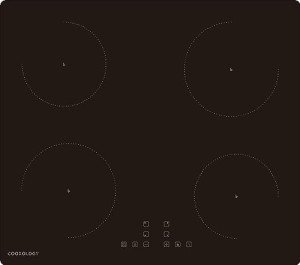14 Smart Ways To Spend Your Extra Money Induction Hob Maintenance Budget
Induction Hob Precautions: Ensuring Safety and Efficiency
Induction cooking has transformed the culinary landscape by using quicker cooking times, accurate temperature level control, and an energy-efficient option to conventional approaches. Nevertheless, with these modern appliances come specific precautions that users need to observe to ensure security and ideal efficiency. This post looks into the various precautions to take when utilizing an induction hob, intending to provide users with the knowledge to boost their cooking experience while preventing possible incidents.
Understanding Induction Hobs
Before diving into precautions, it is important to comprehend what an induction hob is. Induction hobs utilize electro-magnetic fields to heat pots and pans directly while keeping the hob surface area reasonably cool. This approach of cooking is not only energy-efficient however also permits fast temperature adjustments, making it a favorite among home cooks and expert chefs alike.
Security Precautions When Using an Induction Hob
While induction hobs are typically safe, users must remain vigilant and abide by best practices. Here are some safety precautions to think about:
1. Appropriate Cookware Selection
Induction hobs work just with ferrous (magnetic) cookware. Here are the kinds of pots and pans suitable for induction cooking:
- Cast Iron: Excellent heat retention and distribution.
- Stainless-steel: Heavy-bottomed alternatives generally work well.
- Carbon Steel: Similar advantages to cast iron, with lighter weight.
The following pots and pans materials are not ideal for induction:
- Glass cookware
- Aluminum cookware (unless it has a magnetic base)
- Copper cookware
2. Keeping the Cooking Surface Clean
To preserve an effective induction hob, it is vital to keep the cooking surface area clean:
- Wipe spills right away to prevent them from baking onto the surface area.
- Use mild, non-abrasive cleaners to prevent scratching the glass surface.
- Avoid cleaning up the hob while it's hot to prevent burns.
3. Ventilation
Despite the fact that induction cooking produces less heat, guaranteeing that the kitchen is well-ventilated is crucial:
- Open windows or use exhaust fans to disperse steam and odors.
- Keep air flow to avoid overheating the appliance.
4. Prevent Blocking Ventilation Vents
A lot of induction hobs include ventilation systems. It's vital not to block these vents throughout operation:
- Ensure there's at least a couple of inches of space around the hob.
- Prevent positioning things on top of or around the hob that might obstruct air flow.
Electrical Precautions
Dealing with electrical devices needs specific precautions to guarantee user safety. Here are some tips to consider:
- Check Wiring: Ensure that the induction hob's outlet can handle its power requirements. Many hobs need a devoted circuit.
- Avoid Water: Keep the hob and the surrounding location dry to prevent electrical shocks.
- Disconnect when not in usage: If the induction hob is portable, disconnect it after each use to reduce risk.
Using the Right Settings
Induction hobs come geared up with numerous settings, and comprehending how to utilize them can prevent cooking incidents:
- Temperature Control: Familiarize yourself with the temperature level settings to prevent overheating pots and pans.
- Timer Function: Utilize the timer function to prevent overcooking or burning food.
- Automatic Shut-off: Many models come with automatic shut-off features; however, it's vital not to rely solely on this function.
FAQs
What types of pots and pans will not work with an induction hob?
Cookware made from non-magnetic products like glass, aluminum, and copper (unless specifically designed with a magnetic base) will not heat on induction hobs.
Can I utilize my existing pots and pans on an induction hob?
You can check if your existing pots and pans is induction-compatible by performing the magnet test; if a magnet adheres to the bottom, it can be used on an induction hob.
Are induction hobs safe for children?
While induction hobs are much safer than gas or electric choices in regards to surface area heat, it's still recommended to monitor children around the kitchen area and inform them on the importance of cooking area safety.
Is it needed to have a special cooling system for an induction hob?
Most modern induction hobs have built-in cooling systems that are adequate for regular usage. Nevertheless, Induction Hob Installation that ventilation and airflow are not obstructed.
Induction cooking offers a blend of innovation and safety, making it a favored choice for numerous families. Comprehending and adhering to correct precautions can boost the performance and lifespan of an induction hob while making sure a safe cooking environment. By following the guidelines detailed in this post— such as picking the best pots and pans, keeping tidiness, ensuring correct electrical precautions, and using the proper settings— users can enjoy the benefits of induction cooking with assurance.
With appropriate care and adherence to safety protocols, induction hobs can act as a great and effective tool in the modern cooking area.
